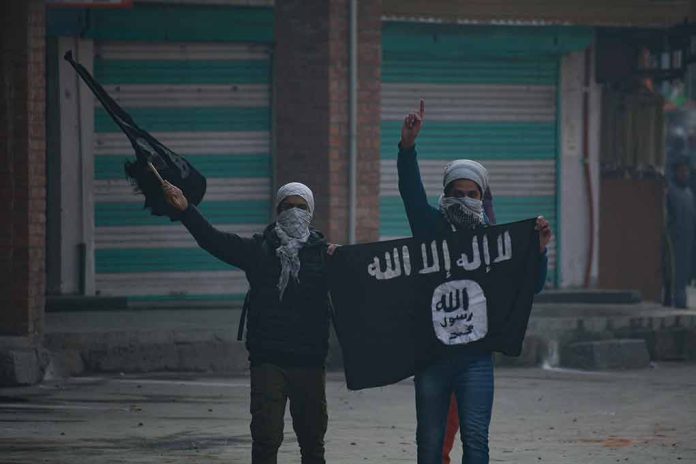
Israel launches “Operation Gideon’s Chariots” in Gaza, killing over 100 in airstrikes while strategically isolating Hamas cells to rescue hostages against the backdrop of Trump’s regional peace initiatives.
Key Takeaways
- The IDF has launched “Operation Gideon’s Chariots” using a “clear, hold, build” strategy to eliminate Hamas terrorists, destroy tunnels, and establish new civilian governance in Gaza.
- Approximately 57 hostages remain in Hamas captivity, with only about 20 believed to still be alive, as Israel focuses on rescue operations through targeted tactical assaults.
- President Trump has visited the region and proposed turning Gaza into a “freedom zone” for reconstruction, acknowledging the humanitarian crisis while supporting Israel’s security operations.
- Israel’s offensive includes extensive airstrikes on over 150 “terror” sites and troop mobilization, with accusations that Hamas uses civilians as human shields.
- UN officials have criticized proposed aid distribution plans, advocating instead for the UN’s established humanitarian response to address rising malnutrition in Gaza.
Israel Unleashes Strategic Operation to Dismantle Hamas
The Israel Defense Forces has launched “Operation Gideon’s Chariots,” a comprehensive military campaign designed to systematically eliminate Hamas’s terrorist infrastructure throughout Gaza. This operation implements a “clear, hold, build” tactical framework that aims not only to neutralize immediate threats but also to establish sustainable governance after Hamas’s removal. The IDF is strategically targeting terrorist cells, extensive tunnel networks, and weapons caches that Hamas has developed since taking control of Gaza. Israeli forces have conducted over 150 precision strikes against verified terrorist targets, focusing on dismantling Hamas’s operational capabilities while working to isolate cells holding hostages.
“Over the past day, the IDF has begun conducting extensive strikes and mobilizing troops to achieve operational control in areas of the Gaza Strip, as part of preparations to expand operations and fulfill the objectives of the war, including the release of hostages and the dismantling of the Hamas terrorist organization,” reported by IDF.
— John Spencer (@SpencerGuard) May 5, 2025
Hostage Rescue Central to Military Operation
A primary motivation behind the timing and tactical approach of Operation Gideon’s Chariots is the urgent mission to rescue remaining hostages. Intelligence indicates approximately 57 hostages remain in Hamas captivity following the October 2023 attack, with Israeli officials believing only about 20 are still alive. Rather than applying broad pressure on Hamas leadership, the IDF has adopted a more surgical approach, isolating individual Hamas cells holding hostages. This tactical shift reflects lessons learned from previous rescue attempts and recognizes the diminishing window for successful recoveries.
The humanitarian situation has become increasingly dire, with Gaza’s civil defense reporting high civilian casualties from Israeli strikes. While Israel maintains its operations target terrorist infrastructure, Hamas has consistently denied using civilians as human shields. The release of American hostage Edan Alexander after U.S. engagement has raised expectations for increased American involvement in pressuring for both humanitarian aid and hostage releases. This development comes as President Trump’s administration balances support for Israel’s security operations with addressing the humanitarian crisis.
Trump Administration’s Regional Strategy
President Trump recently visited the region, notably excluding Israel from his itinerary while acknowledging the humanitarian emergency in Gaza. His administration has proposed an ambitious plan to transform Gaza into a “freedom zone” that could eventually become a luxury reconstruction hub. This vision aligns with Trump’s broader Middle East strategy but discussions regarding Gaza’s future governance have stalled amid ongoing military operations. Despite not directly opposing Israel’s tactical assault, the Trump administration has signaled its intention to address the starvation crisis in Gaza.
“We’re looking at Gaza. And we’re going to get that taken care of. A lot of people are starving.” Donald Trump
Hamas officials have expressed they are “awaiting and expecting the US administration to exert further pressure,” according to spokesman Taher al-Nunu. This statement reflects the complex dynamics between the Trump administration, Israel, and Hamas, with humanitarian aid being leveraged as a diplomatic tool. Meanwhile, Israeli public opinion has shown increasing support for a ceasefire that would secure the release of remaining hostages, though government officials have downplayed the possibility of an immediate breakthrough.
Humanitarian Concerns and International Response
The U.S.-backed plan for aid distribution has faced significant criticism from humanitarian organizations concerned about potential forced population transfers. UN aid chief Tom Fletcher has advocated for utilizing the UN’s established humanitarian response mechanisms instead of implementing new distribution systems, highlighting that existing networks already have community trust and operational capacity. Israel’s blockade on Gaza continues to draw international criticism as malnutrition rates rise, creating tension between humanitarian imperatives and security operations.
“We have the people. We have the distribution networks. We have the trust of the communities on the ground. And we have the aid itself,” said Tom Fletcher
The conflict has extended beyond Gaza, with violence intensifying in the West Bank and Yemen’s Houthi militia launching missiles at Israel. Israel has responded with strikes on Yemeni ports, demonstrating the regional dimensions of this conflict. As Operation Gideon’s Chariots continues, the eventual governance structure for Gaza remains uncertain, despite Israel’s commitment to the “clear, hold, build” strategy that envisions the establishment of non-militarized civilian authorities. Conservative supporters of Israel’s right to self-defense acknowledge that sustainable security will require addressing both the terrorist threat and the humanitarian needs of Gaza’s population.



